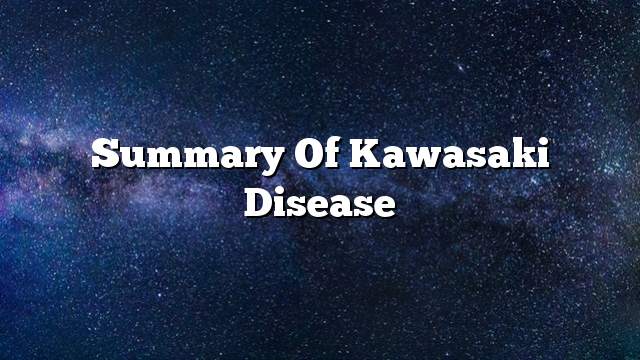Kawasaki disease
Kawasaki disease is a severe disease whose symptoms end only. It is characterized by small to medium vasculitis and affects its walls, which may cause arterial aneurysms especially for the coronary arteries that feed the heart. The cause of the disease is unknown.
Symptoms of the disease
The most common symptom of this disease is the presence of fever lasting for five days, in addition to change in the limbs, rash, inflammation of the conjunctiva, dry lips and mouth, redness and swelling in the mouth to appear as strawberry, with swelling in the lymph nodes in the neck.
Diagnosis of the disease
Diagnosis of this disease depends on the occurrence of these symptoms and some laboratory tests and analyzes and some radiological images, including:
- Urine Tests : These tests help to exclude other diseases.
- Blood tests : In addition to helping to rule out other diseases, blood tests show an increase in the number of white blood cells, anemia, inflammation, and high platelets; all are signs of the disease.
- Electrophysiological planning of the heart : This test uses electrodes installed on the skin to measure the pulse of electrical heartbeat, Kawasaki disease can cause heart rate complications.
- Echocardiogram : This test uses ultrasound images to show how successful the heart works and provides indirect evidence of how the coronary arteries work.
Effects and treatment of disease
This disease has serious effects on the heart of the expansion of the vessels and clots, and increase the proportion of heart problems in these patients, so the current treatment focuses on early treatment and careful monitoring of the condition of the heart. On the other hand, children whose blood vessels have not expanded do not change the rate of heart disease and is similar to that of other healthy people.
Studies and research are based on exploring whether the arteries in these children are slightly more rigid or thicker than usual and whether they have an effect on the patient’s life. Most children with coronary angiography do not interfere with normal activities but need To see the cardiologist regularly, and these children or adults may have some restrictions on the activity depending on the size of the blood vessel expansion and whether or not he was consistent with the treatment of drugs that slow blood clotting.
All children who have this disease must maintain a healthy lifestyle of the heart, reduce risk factors that increase the risk of atherosclerosis, such as: high cholesterol, high blood pressure, or smoking.
The most important complications on the arteries of the heart are early clots and sudden death, so avoid treatment is based on immunoglobulin injections mainly in addition to aspirin and cortisone, and others.
